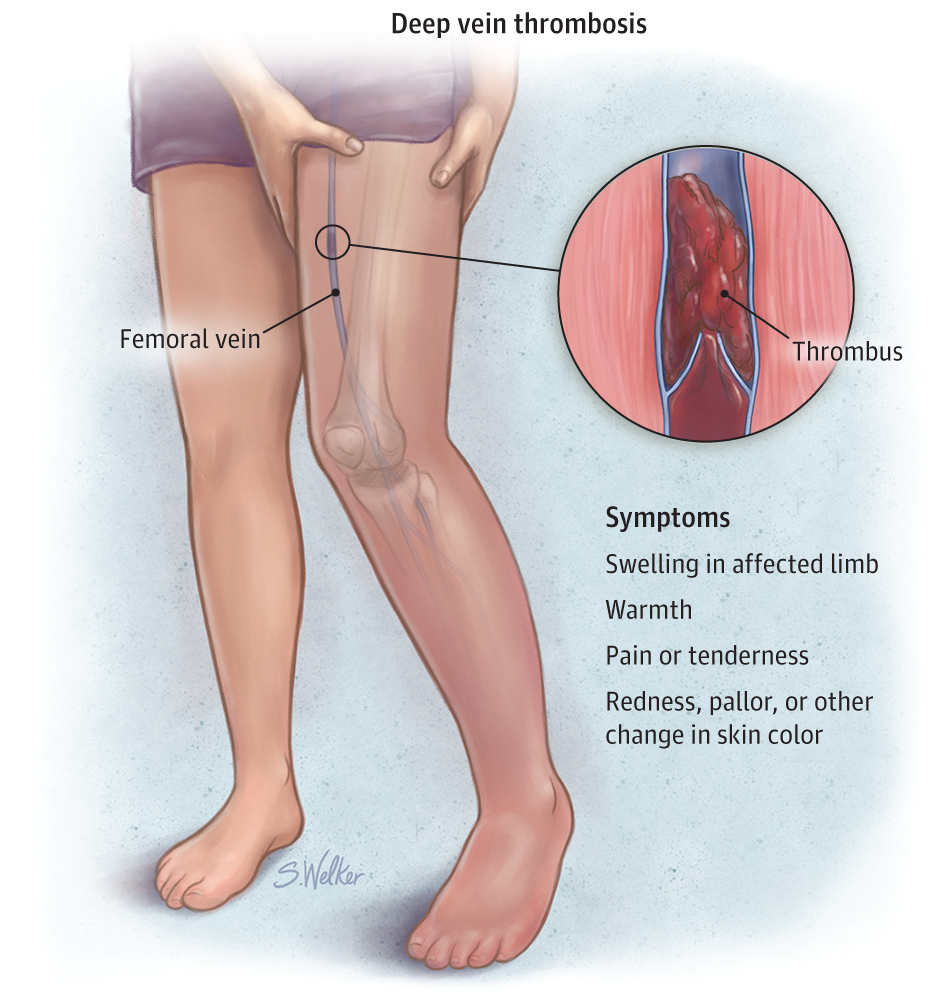What is a deep vein thrombosis (DVT)?
thrombosis is the formation of a blood clot (thrombosis)
which may block a blood vessel (vein or artery). If it
forms in a vein deep in the body it is called a deep vein
thrombosis or DVT. Th is occurs most commonly in the
deeper veins that are present in the thigh or calf muscles
of the leg.
Robina 7 Day Doctors and Acupuncture recommends this video on DVT:
What are the symptoms of DVT?
The area drained by the vein such as the calf may become
swollen, painful and tender. A clot of blood that forms in the veins can move through the circulation into the major vessels of the lungs. This is
known as a pulmonary embolus which cuts off oxygen
to the lungs. Sometimes it can cause sudden death.
Who is at risk?
DVT can occur in any person but some are at greater
risk than others, especially if there is a family history or
the person has had a DVT before.
The risk factors include:
• blood disorders with a clotting tendency
• increasing age
• smoking
• varicose veins
• oestrogen hormone therapy including the “pill”
• pregnancy and early post-pregnancy
• dehydration
• significant illness, especially heart failure, cancer
• recent major surgery
• obesity
Long journeys (more than four hours) by plane (or train,
bus, etc.) cause an increased risk of DVT. This is due to
sitting cramped and still for long periods.
How is it prevented?
Depending on your risk factors, your doctor may suggest
taking half an aspirin for a few days before travel, or in
some cases in those with a past history or thrombophilia
provide injections of a blood thinning substance.
Two main ways to prevent DVT are to exercise the
body, especially the muscles of the legs, and prevent
dehydration.
There is evidence that compression stockings worn up
to the knees can help prevent travel related DVT.
back to home page: www.doctorbulkbill.com.au

